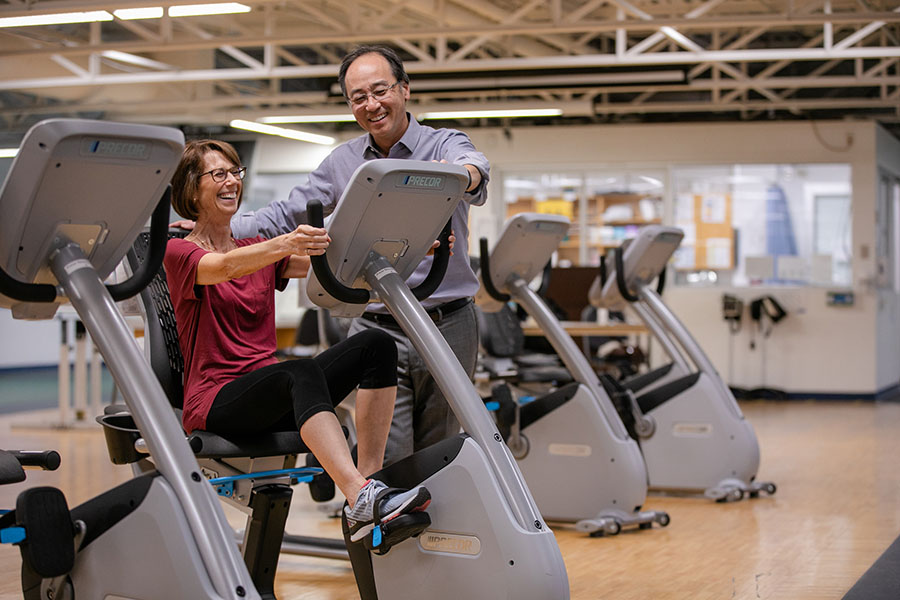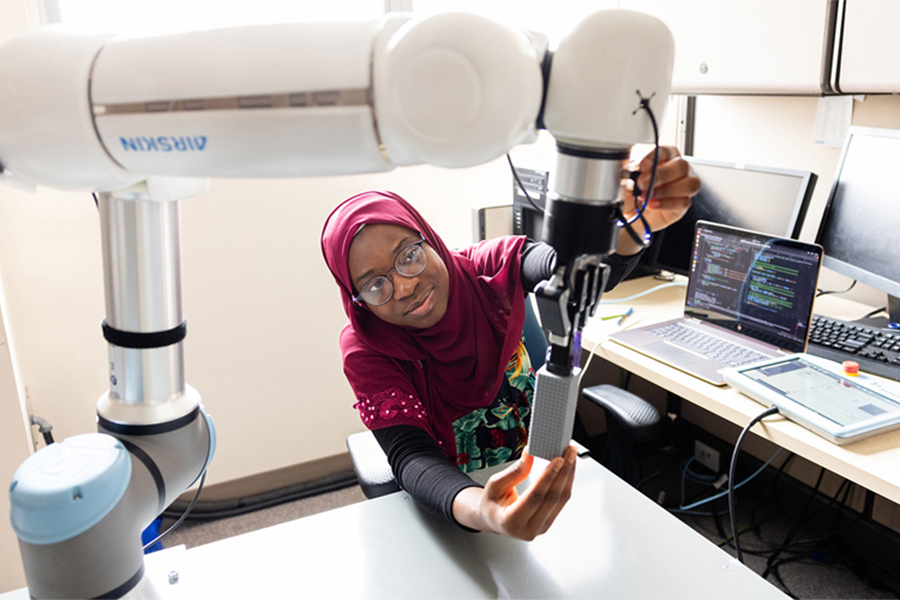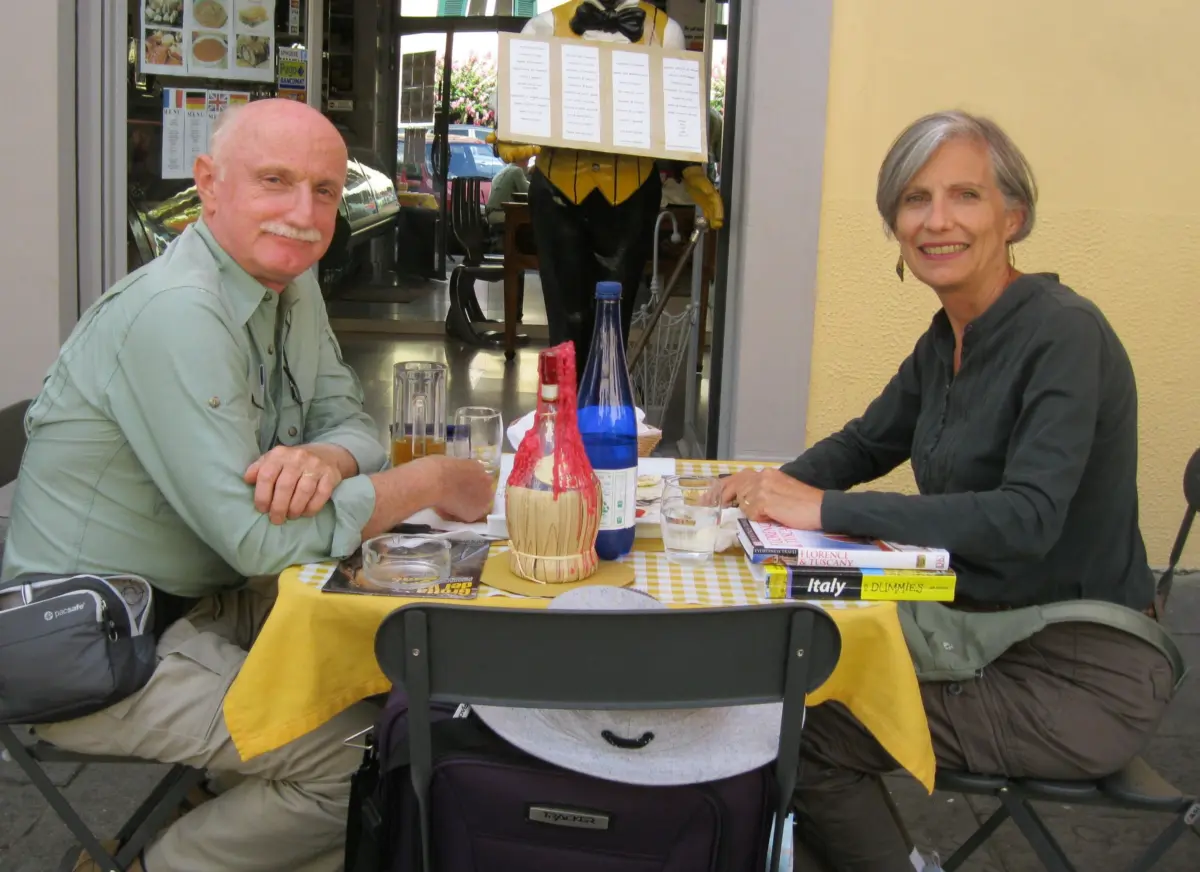“They gave me the confidence I needed to move forward,” says Geri James, a participant in UHN’s Cardiac Rehab program, who credits her care team for helping her get back to running, after a heart attack. (Photo: Courtesy Geri James)
One day, Geraldine (Geri) James was running 10 kilometres as part of her regular fitness routine. The next, she was admitted to the hospital for a heart attack, and being told her days of lacing up were over.
“I thought, ‘I couldn’t have had a heart attack. I eat well, exercise, and am otherwise healthy.’ It came as a complete shock,” says Geri, who was 59 years old when her event occurred in November 2020.
Equally difficult to unpack was the cause – a spontaneous coronary artery dissection (SCAD), which is a tear that forms in the artery of the heart, causing blood to pool and clot, and commonly leading to a heart attack.
True to its name, SCAD is unpredictable in who it affects and how it’s caused, leaving those who experience it feeling at a loss for how to move forward. As a condition the healthcare community is just starting to understand better, recommendations supporting recovery are limited.
“I needed reassurance that there were people looking out for me on this recovery journey and that I’d one day be able to resume the activities I loved,” she says.
A referral to UHN’s Cardiovascular Prevention and Rehabilitation Program* at Toronto Rehab’s Rumsey Centre made that happen. There, she found step-by-step support, and realized her goal of running again.
“When you think you’re totally healthy and then stopped in your tracks with something like SCAD, it can be very daunting to resume physical activity, no matter how active you were before,” says Dr. Tracey Colella, a clinician-scientist in the program.
“We want women to know there’s life after SCAD and cardiac rehab can help them resume it safely.”
A support network that guides recovery
Heart attacks caused by a SCAD are different, in that they aren’t associated with weight, diet, high blood pressure and other lifestyle factors that increase a person’s risk.
Ninety percent of SCAD cases are found in women between 30 and 60 years old, though teams are also seeing SCAD in pregnant and postpartum women. The causes are still largely unknown, but may include genetics, hormone changes, drug use, and physical and emotional stress.
What isn’t different is how to safely respond.
“We know cardiac rehab is good for everyone, no matter what heart event they’ve experienced,” says Dr. Colella.
“It creates a support network to guide your physical recovery, and is shown to reduce anxiety and fear about the future.”

In fact, men and women who participate in cardiac rehab can decrease their risk of morbidity and mortality, within three years of a heart event, by up to 50 per cent.
Through exercise, nutrition and medication education, and an emphasis on self-management, each cardiac rehab participant is encouraged to get active and take control of their own well-being.
The four-month program offers a hybrid of individual and group support, both on-site and virtual, and is facilitated by a multidisciplinary team, including kinesiologists, physicians, nurses, physiotherapists, social workers, psychologists, dieticians, and cardiac lab technologists.
Each participant’s journey starts with a pre-admission assessment, as well as a VO2max exercise stress test, to identify the maximum amount of oxygen their body is capable of exerting during exercise. This helps guide staff in developing a safe and effective exercise prescription.
Reaching goals, one step at a time
With the goal of running in mind, Geri got right to work on building an exercise prescription with Christine Occhipinti, a supervisor in UHN’s Cardiac Rehab program.
“Christine was very supportive of my goal, as long as we put certain parameters in place, like ensuring my heart rate, blood pressure and exertion stayed below a certain threshold,” says Geri. “This was a very different message from what I was originally told, and was very reassuring.”
Christine says part of her role is “helping patients identify meaningful and realistic rehab goals, and applying a graduated approach to achieving them safely.
“While a lack of published literature may make some physicians uncertain about whether SCAD patients can resume exercise, the recommendations that are available can still help guide recovery.”
These include avoiding “very difficult” or “maximum effort” activity levels; abrupt increases in physical activity without a warm-up; and exercising in extreme temperatures or terrains.
Geri’s exercise prescription got her moving five days per week, walking at a moderate pace for 30 minutes, and slowly increasing both the intensity and time, over the course of several weeks. Next, one-minute jogging intervals were incorporated, starting with a one-minute jog every five minutes, and increasing the jogging intervals over time. By the end of her program, Geri had progressed to running for four minutes, and walking for one minute, for a total of 60 minutes.
But Geri’s recovery journey didn’t stop there.
With an open mind and guidance from Dr. Jaan Reitav, a psychologist in UHN’s Cardiac Rehab program, she explored a number of approaches to help her deal with the emotional fallout of her SCAD and heart attack.
These included sleep strategies, eye movement desensitization and reprocessing (EMDR), which is a visualization technique to help individuals let go of distressing medical experiences, to mindfulness exercises. Geri found the breathing techniques she learned to be most helpful, when she was feeling anxious about the future of her health.
“While patients are physically recovering, their brain is constantly reflecting, asking questions like, ‘Am I going to be okay? Will I have another event? What will happen to my family?’ This is a layer of stress all patients feel,” says Dr. Reitav.
“Deep, belly breathing slows the body and the brain down, and creates a sense of well-being in the nervous system.”
Try this five-minute exercise, with the goal of getting to five breaths per minute: breath in through the nose for three seconds, pause for one second, and then exhale through pursed lips for about seven seconds. Pause and repeat.
Today, Geri is back to running on a regular basis, and still hopes to build up to running 10 kilometres again.
Looking back, she says the UHN Cardiac Rehab team helped her achieve so much more than her running goal.
“They gave me the confidence I needed to move forward,” she says. “Now I know I have a team that will be there if I need support.
“And that by taking a measured approach, I can get back to the activities I love, in a way that’s safe for me.”
The future of women’s heart health
With the field of women’s heart health growing each year, experts say we’re on the precipice of understanding more about SCAD, its causes and how to target treatment.
At KITE, Toronto Rehab’s research arm, Dr. Colella and team are about to embark on a database review, examining the safety and efficacy of a structured exercise program for SCAD patients. This work will inform a future prospective study that will help care providers better meet the rehabilitation needs of this unique patient population.
In the meantime, networks of experts and advocates, such as the Canadian Women’s Heart Health Alliance (CWHHA), are creating evidence-based strategies to transform how we care for women and taking action toward enhancing women’s health.
“My motivation was to join forces with a national team of experts, including women with lived experience, to push the women’s heart health agenda forward,” says Dr. Colella, who, along with Toronto Rehab physician and education lead, Dr. Rajni Nijhawan, play knowledge-translation and advocacy roles, respectively, in the CWHHA.
It’s an agenda that UHN’s Cardiac Rehab supports.
“Cardiac rehab is an essential part of a woman’s recovery journey, but it hasn’t historically been represented in the development of women-specific best practice guidelines,” says Dr. Colella.
“We want all eligible individuals to know that participation in this type of program plays an important role.”
*From prevention, to acute, to rehabilitation, UHN offers an integrated continuum of care through the Peter Munk Cardiac Centre and Toronto Rehab. The Cardiovascular Prevention and Rehabilitation Program at UHN is located at Toronto Western Hospital’s GoodLife Fitness Cardiovascular Rehabilitation Unit and Toronto Rehab’s Rumsey Centre.


